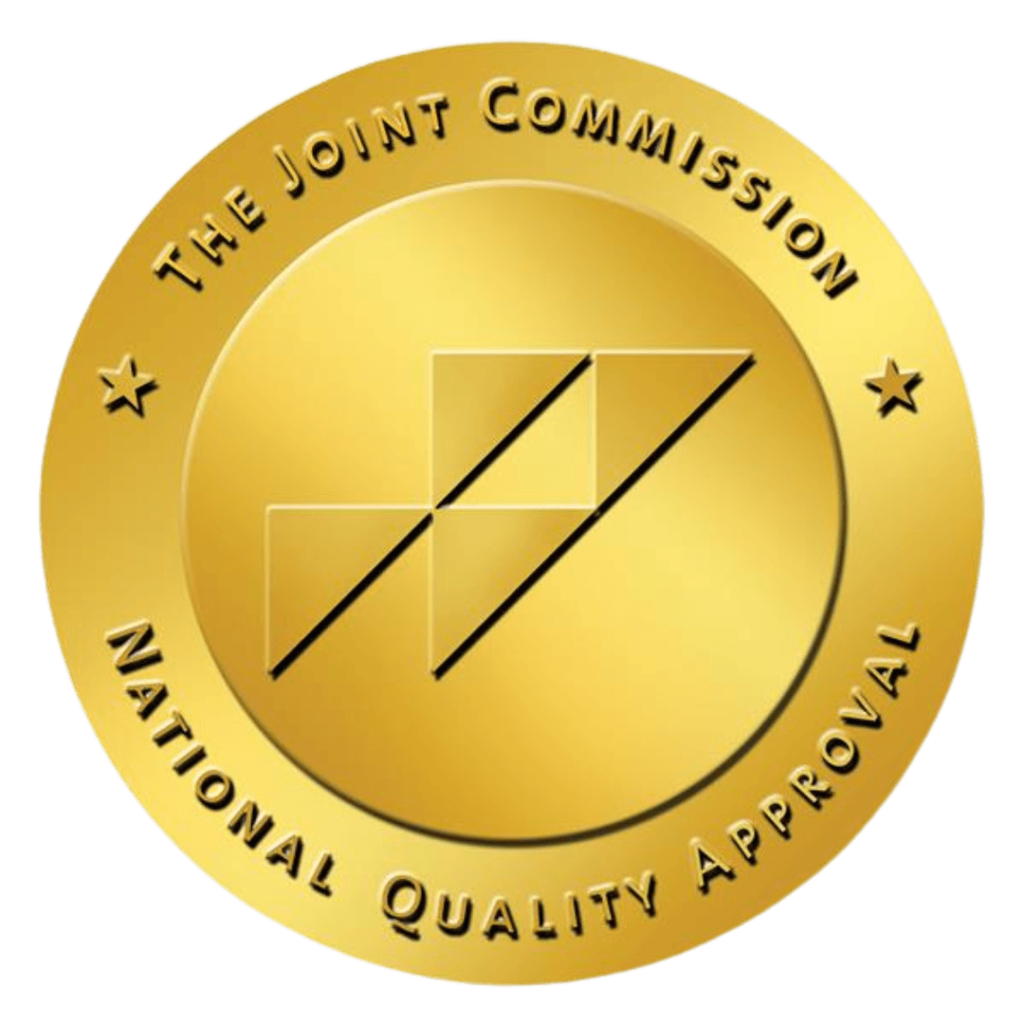Alcoholism, or alcohol use disorder, occurs when a person abuses alcohol and becomes dependent and addicted to it.
This is actually a prevailing problem in the United States. In a 2019 National Survey of Drug Use and Health, nearly 15 million people aged 12 and older had an alcohol use disorder.
While a common health problem, alcoholism is not as simple as excessive drinking. In this article, we’ll dive deeper into what alcoholism is and look at its causes, symptoms, stages, and possible treatments.

What is Alcoholism?
Alcoholism or alcohol use disorder– AUD, for short– is a disorder where a person becomes dependent and addicted to alcohol that they cannot stop or control consuming it despite the negative impact on their life.
If you have AUD, you won’t know when or how to stop drinking. If you are not drinking, you’ll spend a lot of time thinking about it, even if it’s causing problems to your health, finances, and social life.
It’s important to note that excessive alcohol consumption is not necessarily the same as alcohol dependence or addiction. Moreover, moderate drinking generally won’t cause harm. But if social drinking becomes more frequent and consumption is increased, you may develop AUD.
Causes of Alcoholism
Genetics
Biology plays quite a significant part in addiction, particularly genetics.
Biological children of alcoholics are more likely to become alcoholics themselves, whether raised by alcoholics or non-alcoholics. On the same note, if raised by alcoholics, non-biological children are less likely to have AUD than biological children.
Explaining alcoholism through genetics cannot be fully defined with just one gene. At least 51 genes have been discovered that interact with one another and influence alcoholism. And these many genes affect different aspects of the disorder, such as the severity of hangovers, ease, and speed of alcohol being broken down, risky behaviors, and how alcohol makes you feel.
Psychological Factors
Certain psychological factors may increase the chances of alcoholism. For instance, if you’re under a lot of stress, suffer from depression, or have anxiety, you’re more likely to turn to heavy drinking as a way to cope.
Unfortunately, drinking to suppress or relieve psychological symptoms may become a habit and turn into AUD. It’s a vicious cycle of drinking, developing and increasing your tolerance, increasing your intake, and becoming dependent and addicted.
Personality
Some personalities are more likely to develop AUD than others. For instance, if you want to be the “life of the party,” you may become a heavy social drinker because you think alcohol makes you more fun and people like you more when intoxicated.
Environment and Lifestyle
Alcoholism may be a situation of nature versus nurture. While genetics is a significant factor in alcoholism, one’s environment plays a major role as well. The more accessible and pervasive alcohol is in an environmental setting, the higher the chances of developing AUD.
Wealth also comes into play. People with great family wealth have higher chances of drinking heavily and developing alcohol use disorders.

What Are The Symptoms of Alcoholism?
In occasional drinking sessions, the effects of alcohol usually wear off after a few hours or a day. But abusing the substance carries some side effects.
Short-term effects may include:
- Difficulty breathing
- Headaches
- Distorted hearing and vision
- Nausea
- Impaired judgment.
But long-term effects are more serious and can cause irreversible damage. For the most part, the effects of alcoholism are the same symptoms that will indicate that you may be suffering from AUD.
Physical Signs
Excessive drinking and addiction to alcohol can cause harm to your body. Physical signs of alcoholism include:
- Extreme weight loss from drinking instead of eating
- Yellow skin and eyes due to liver damage
- The lingering smell of alcohol on your breath even hours after drinking
- More wrinkles and increased appearance of aging
- Dry skin
- Brittle nails and hair
- Broken capillaries on the nose and face
- High blood pressure
Behavioral and Psychological Signs
AUD can also negatively affect your mental health. Behavioral and psychological symptoms include:
- Poor hygiene as a result of neglect
- Temporary blackouts
- Short-term memory loss
- Extreme mood swings and irritability
- Feeling hungover even if you didn’t drink
- Depression
- Anxiety disorders
Social Signs
Other major effects and signs of AUD are not medical. Addiction to alcohol can put a strain on your relationships and lead you to neglect your responsibilities.
Social alcoholism symptoms include:
- Drinking more and longer than intended
- Drinking in secret or alone
- Wanting to cut down or stop but failing
- Feeling irritated if there is no alcohol available
- Storing alcohol in odd places
- Spending plenty of time drinking or suffering from the effects of drinking like hangovers
- Constantly craving and thinking about drinking
- Detaching yourself from loved ones, like friends and family
- Hanging out with other people who can provide you with alcohol
- Financial troubles because most of your money went to purchasing or consuming alcohol
- Legal problems caused by intoxication
- Neglecting your responsibilities to drink, such as missing work and school
- Giving up on things you used to find interest or pleasure in
- Having to drink more to get an effect
- Continuing to drink despite seeing all the problems it has caused
- Experiencing withdrawal symptoms when the alcohol wears off

What Are The Stages Of Alcoholism?
Pre-Alcoholic Stage
This stage has little to do with drinking as a problem. This is where you experiment with the substance and develop a tolerance as you drink more regularly.
Early Stage
At this stage, you begin to drink more regularly and even blackout occasionally.
You may not be drinking every day or even every week, but you still consume it frequently with the idea that it’s needed for a good time or to relax.
Middle Stage
Middle Alcoholic Stage becomes more evident to people around you. But being able to hide it is a problem, especially if you’re able to lie to yourself about it.
At this phase, you may underplay how much and often you drink. You might also look for excuses to “explain” your behavior.
As your AUD progresses, you may start to experience some symptoms listed above, such as:
- Problems in school or work
- Regularly hungover
- Craving
- Irritability
You also drink while doing something important or casual, like at work or while looking after children.
Late Stage
During the Late Stage, more severe symptoms start to become apparent.
- Trying and failing to cut down or stop multiple times
- Drinking all-day
- Shifting your priorities to drinking over your responsibilities and hobbies
- Financial trouble
- Paranoia
Some people– functioning alcoholics– at this phase can still maintain a regular life. However, this does not stop them from experiencing physical side effects like liver damage.

What Are the Withdrawal Symptoms of Alcoholism?
When treating any type of substance addiction, withdrawal symptoms will follow. In a sense, it’s your body’s way of readjusting to having the substance out. You’ve become dependent on it that flushing it out of your system will cause reactions.
These symptoms are often uncomfortable, ranging from mild to moderate. Unfortunately, there may be instances when the symptoms become severe and dangerous, sometimes even life-threatening.
How Does Withdrawal Work?
Here’s a timeline of what alcohol withdrawal may look like.
6 hours after your last drink
Six hours after consumption, you may start to experience mild withdrawal symptoms.
- Headache
- Nausea
- Vomiting
- Sweating
- Shaky hands
- Insomnia
- Anxiety
12 to 48 hours after your last drink
Withdrawal symptoms become more serious at this point.
- Hallucinations
- Disorientation
- Hand tremors
- Seizures
48 to 72 hours after your last drink
At this stage, some symptoms continue or even intensify.
- Insomnia
- Seizures
- Hallucinations
- Excessive sweating
- High blood pressure
- High fever
- Delirium tremens
The intensity and duration of withdrawal symptoms depend on multiple factors, like drinking frequency, amount consumed, duration of drinking, and medical history. But typically, they subside within five days.

What Are The Treatments Used To Treat Alcoholism?
Medical Detox
This is the first step in most rehab programs. Essentially, you’ll let the substance leave your system.
But this may be a difficult step. As you detox, you will experience withdrawal symptoms. That’s why it’s vital that you do it in a safe environment with medical professionals around, like a treatment center.
Behavioral Therapies and Counseling
Therapy and counseling aim to help you recognize detrimental behaviors and teach you how to overcome and change them. The most common techniques used are cognitive-behavioral therapy, motivational therapy, contingency therapy, group therapy, and 12-step facilitation.
Support Groups
Meeting people who are going through the same situation as you can help on your recovery journey. You’ll be able to share experiences and learn from each other. The most popular support group for recovering alcoholics is Alcoholics Anonymous or AA. Meetings are usually free and available to almost everyone. Other groups are Celebrate! Recovery, Recovery Dharma, and Rational Recovery.
Medications
Medications, like detox, are present in most treatments. They can help you manage or control symptoms like cravings. Naltrexone, acamprosate, topiramate, and gabapentin are some of the medications that help treat AUD.
Conclusion
Dependence and addiction to alcohol are continuing issues around the world. Despite the consequences, alcoholics still consume heavy amounts of it. With knowing what there is to know about the disorder– causes, symptoms, and treatments– you may be able to help a loved one or heal yourself from alcoholism.
Living with alcoholism does not have to be it for you. You can heal and recover with alcoholism treatments. If you or anyone you know wants to begin the road to recovery, turn to Restore Health & Wellness Center. You can visit us at 6918 Owensmouth Ave, Canoga Park, CA 91303, contact us at 888-979-4570, or visit our website here.




